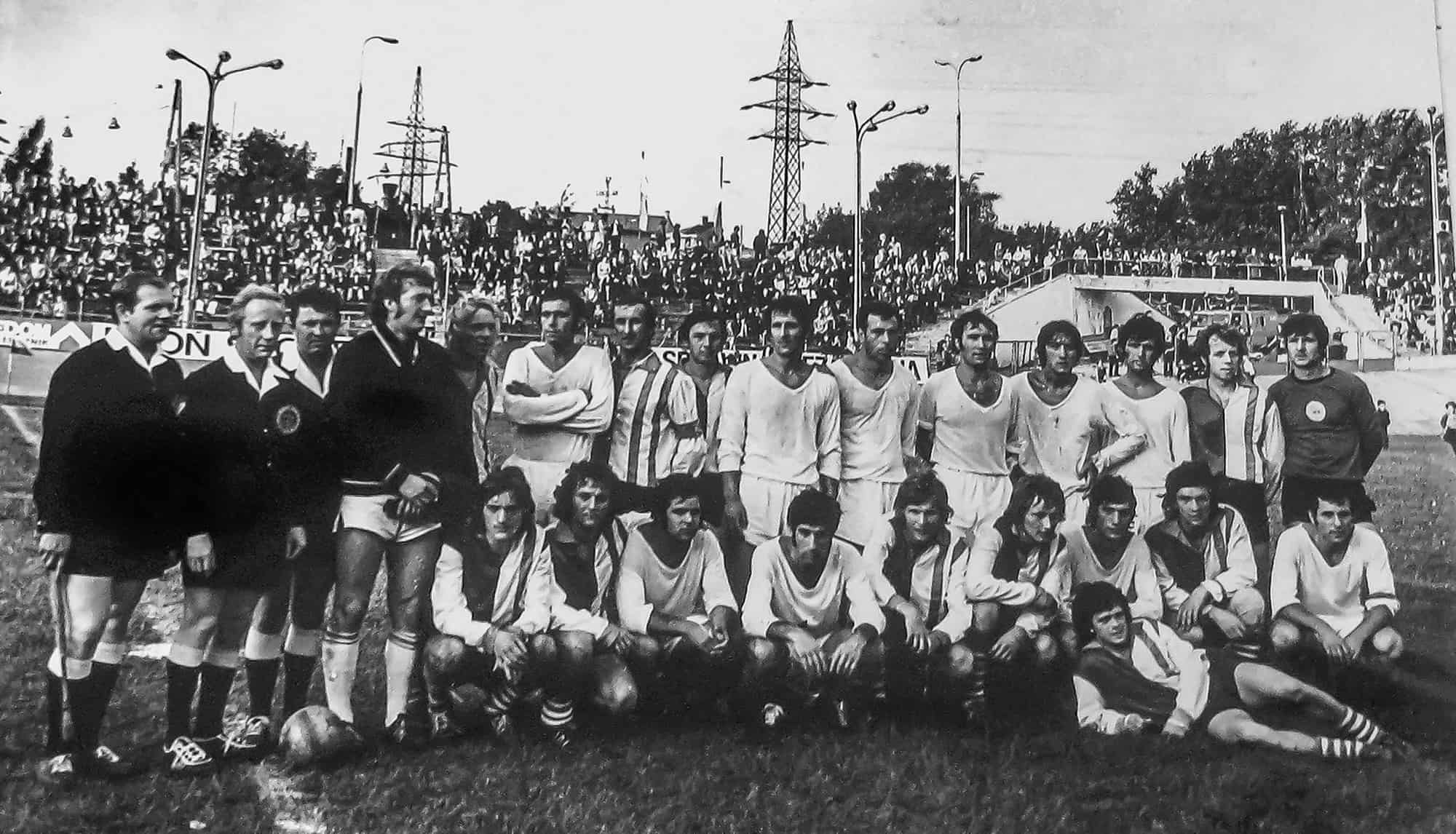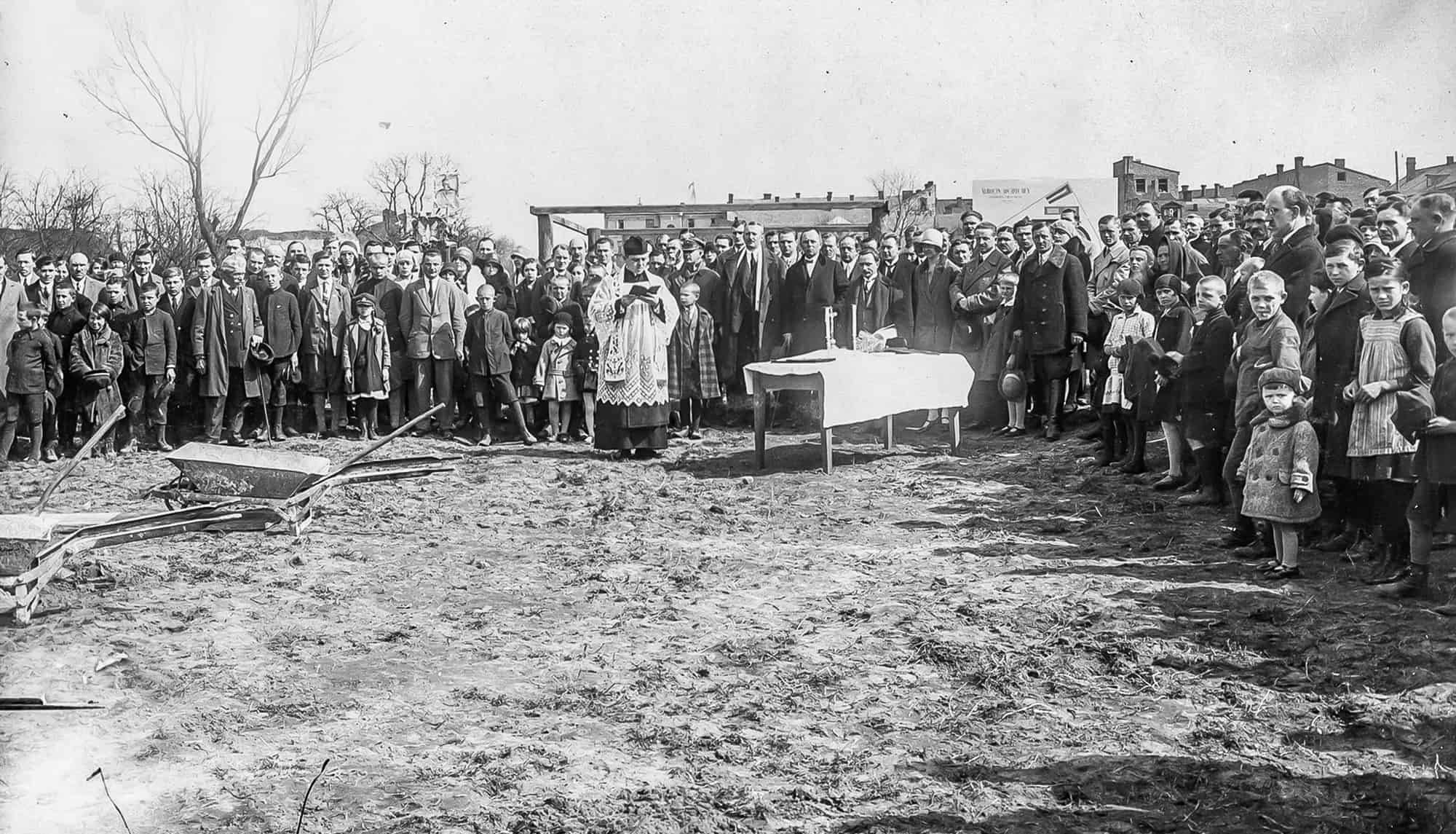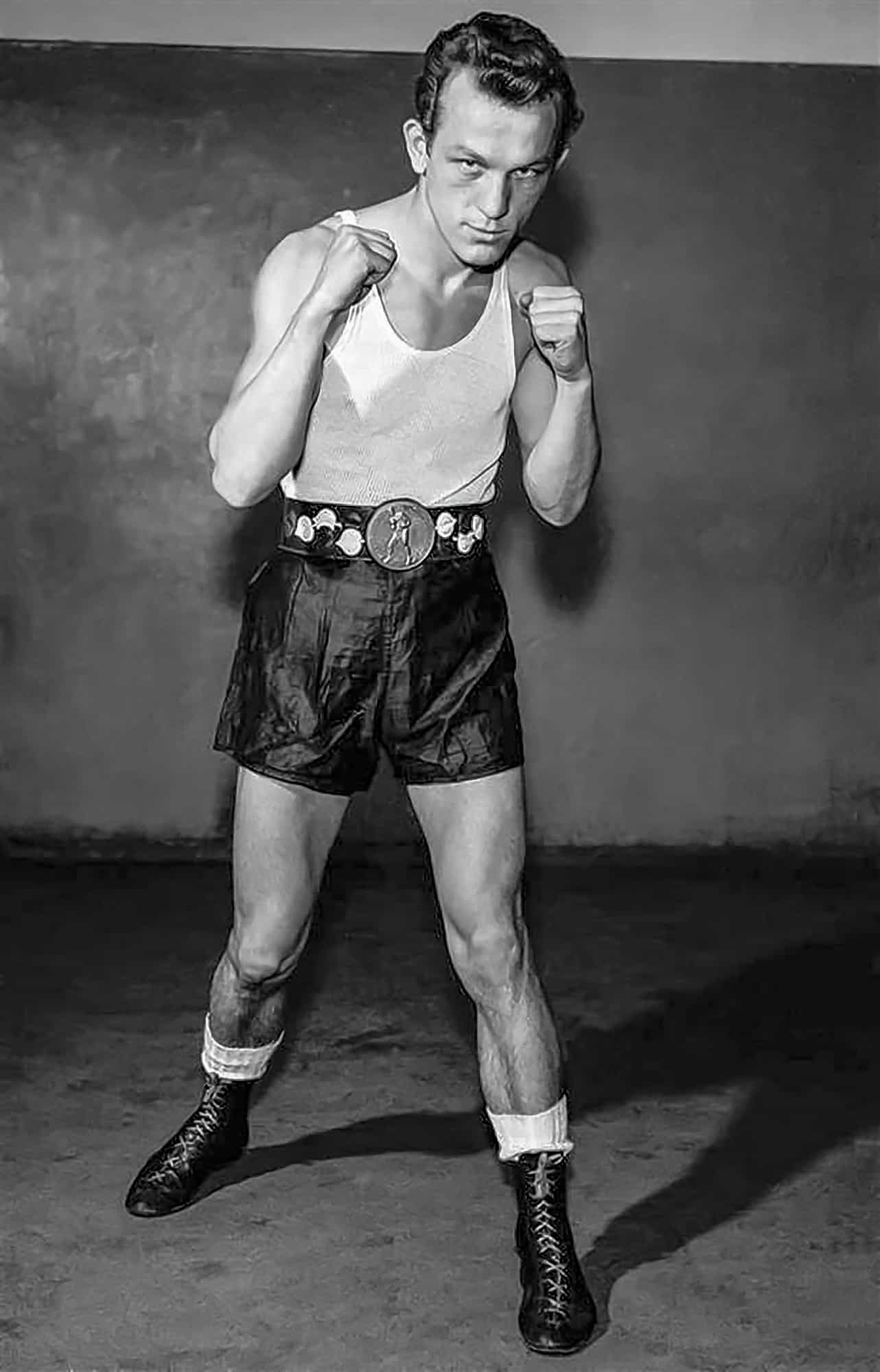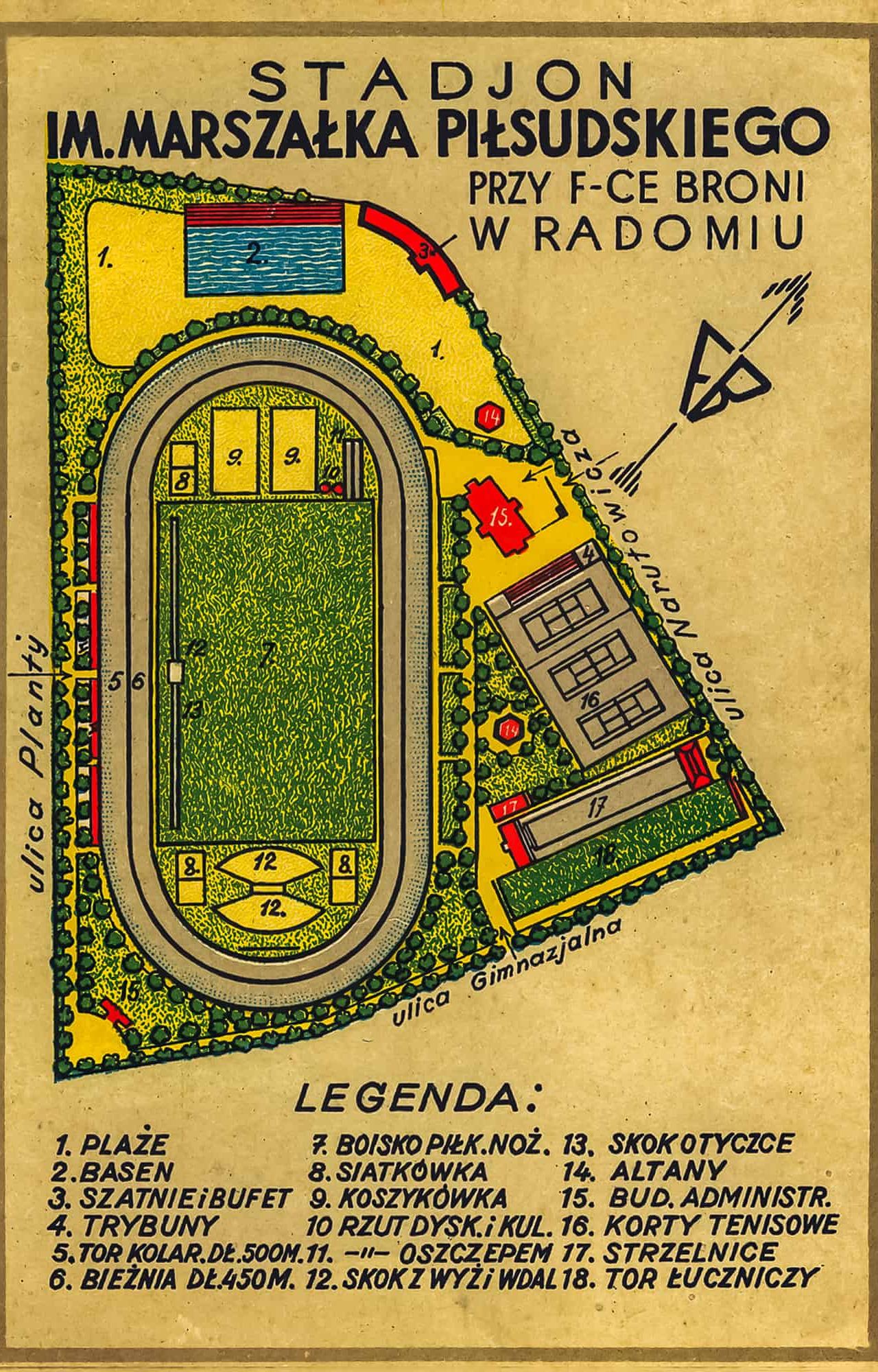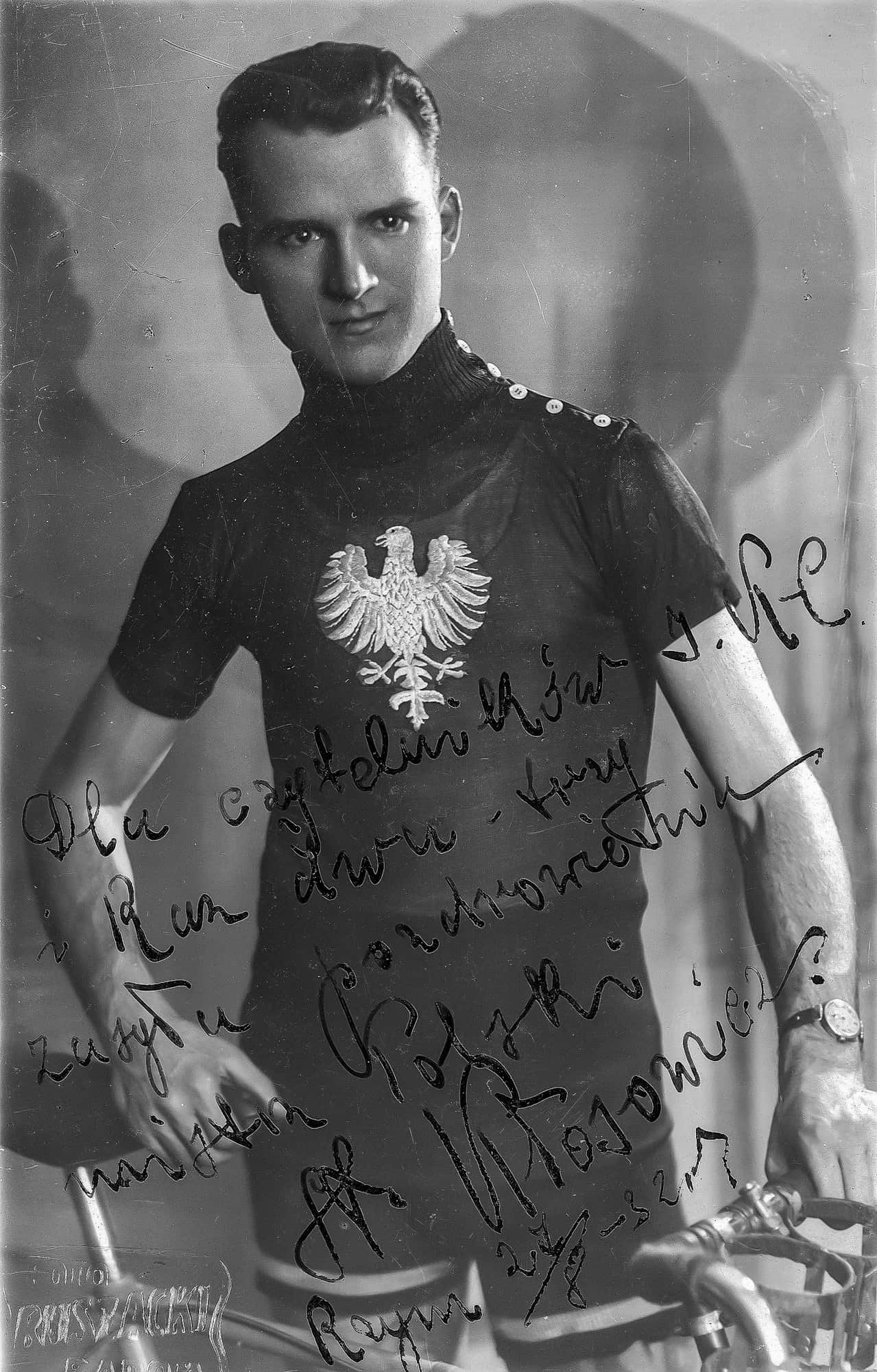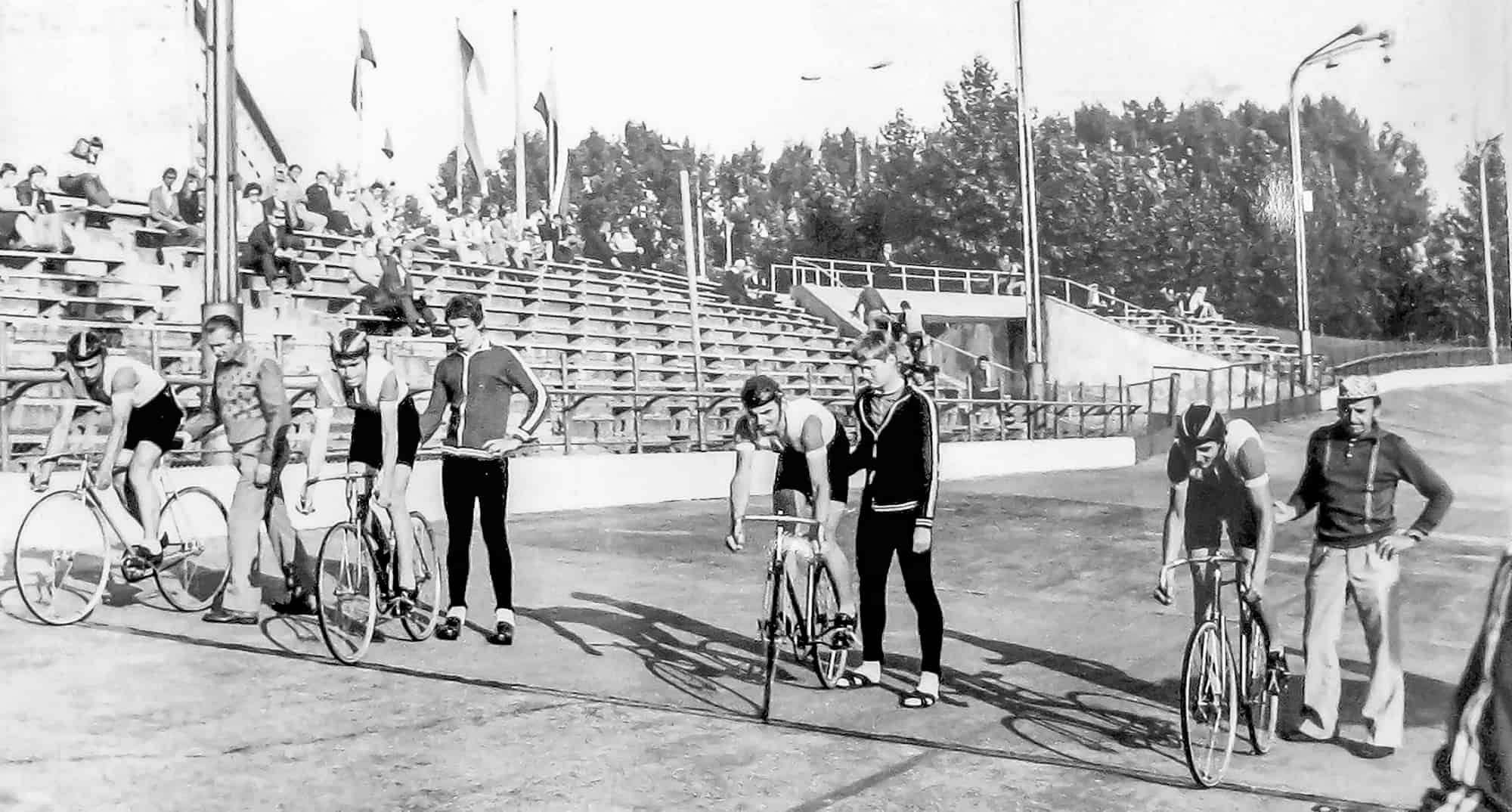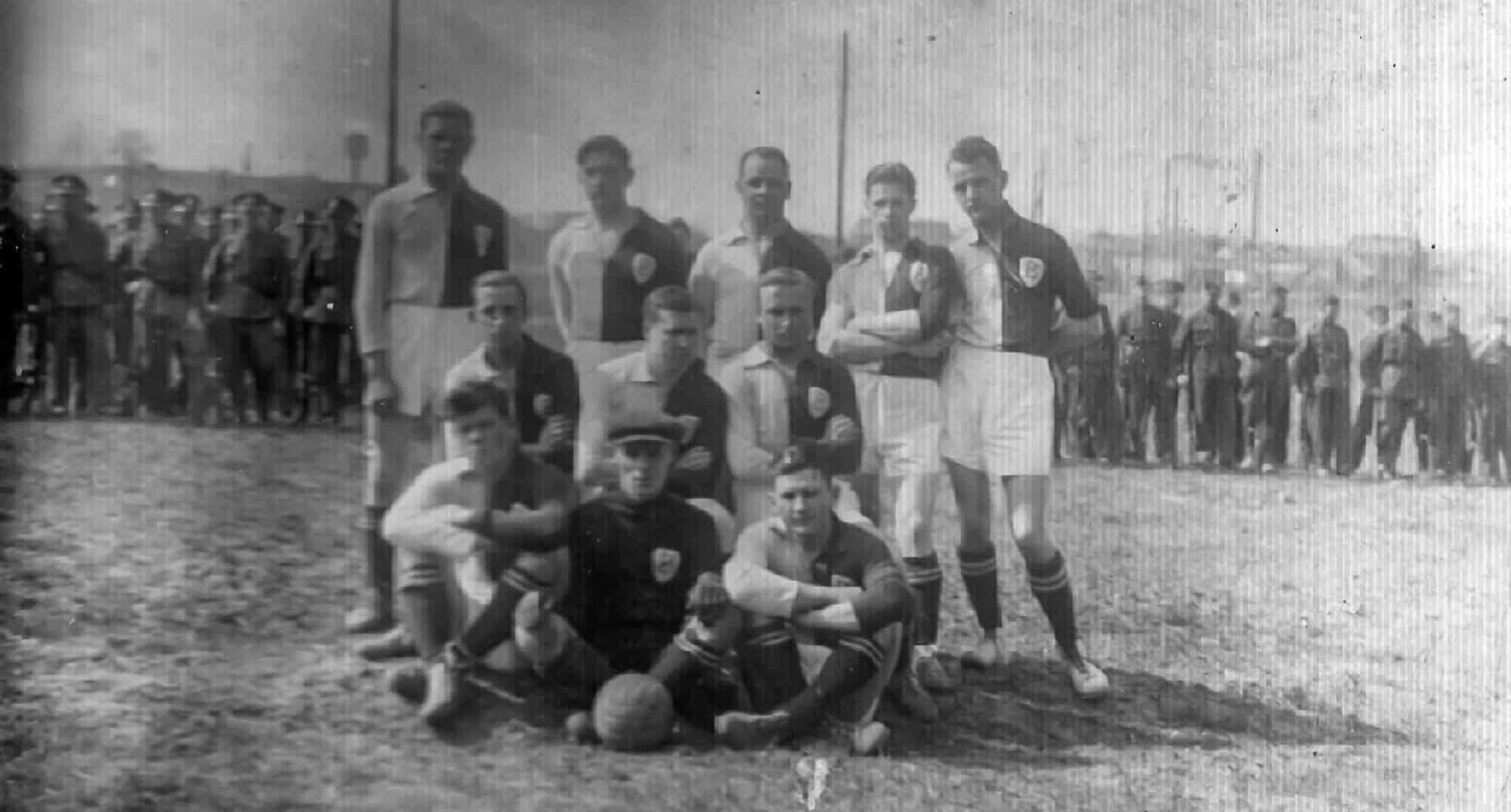ARMS STADIUM
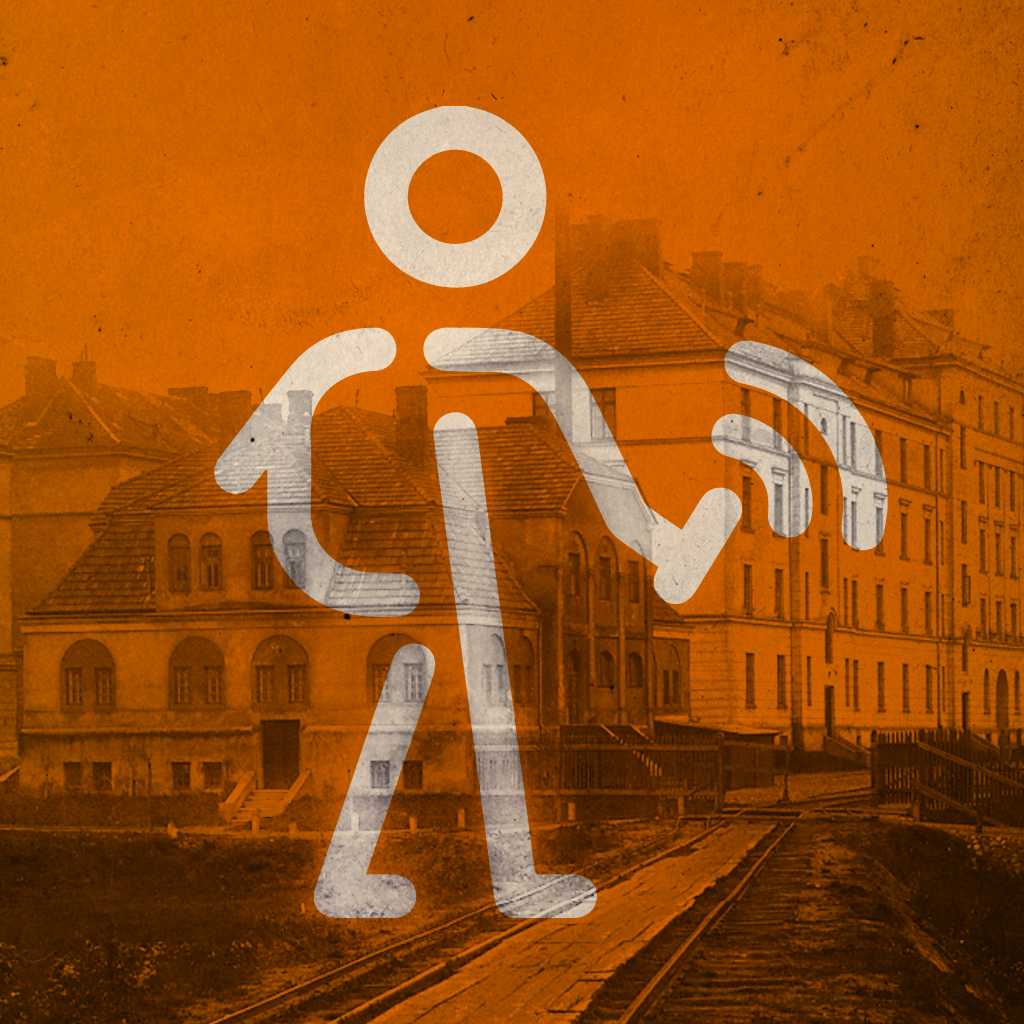
Listen to the audio guide
The decision to build a Sports Stadium at the Weapons Factory was made in the first years of its existence. It resulted from the need to provide employees with opportunities to participate in sports, thereby increasing physical fitness and improving their health. The original plans called for a stadium with a soccer field and a cycling track, as well as a basketball court, tennis courts and a shooting range. A plot of over 4 hectares on G. Narutowicza Street was chosen as its location. The ceremonial laying of the cornerstone for the building took place on May 3, 1929. Due to extremely high investment costs, estimated at 124 thousand zloty, the stadium was built in stages. Some of the work was done by employees of the Weapons Factory as a community service. To raise the money needed for the investment, the workers and their managers voluntarily taxed themselves, donating 0.5% of their income for three months in 1929. In this way, an amount of 8,600 zlotys was collected, which was supplemented by a donation from the cultural and educational club operating at the factory. In total, the employees donated 10 thousand zlotys for this purpose, and 17 thousand zlotys were donated by the management of the Weapons Factory. With these funds, a soccer field was built in 1930. In subsequent years, a sports shooting range, three tennis courts, a basketball court, a swimming pool, a locker room with a buffet, and an administration building were constructed. Of particular importance was the construction of a cycling track, which was completed in 1934. It was one of the first such facilities in the country. It enabled not only practicing of cycling but also testing and promotion of “Łucznik” brand bicycles produced in the factory.
Bicycles of “Łucznik” brand were the biggest success of the factory in the field of civilian production. Work on their production in Radom began in 1929, with the signing of a contract with two French companies: “Chambre Syndicale du Cycle” and “Daly”. The French gave the management of the Radom factory full production documentation in exchange for a share in the profits from the sale of the first 125 thousand bicycles produced. This decision proved to be extremely accurate. Radom bicycles quickly became a production “hit” of the Arms Factory, and “Łucznik” – an extremely popular brand at home and abroad. The brand’s graphic mark, depicting a man shooting a bow, was taken from a watercolour by the painter Władysław Skoczylas.
Radom bicycles were produced in more than a dozen models, adapted to the age and needs of users. In addition to those for the civilian market, bikes for the uniformed services were also produced, including bikes for the military. They had a reinforced construction, with a special handle for transporting rifles.
Sports bicycles, so called kolarki (racing bicycles), were also very popular. They worked well during the cycling races, popular in the interwar period, played on roads of various quality in the Second Polish Republic, as well as on foreign routes. Thanks to these competitions, the “Łucznik” bicycles from Radom have gained a reputation for their durability and comfort.
A bicycle at that time was a luxury item and not cheap. In the 1920s, the cheapest youth bicycle cost 180 zloty, and the salary of an ordinary worker at the Weapons Factory was 120 zloty. The most expensive model “Cyklo” equipped with a derailleur system cost as much as 340 PLN.
The quality of “Łucznik” bicycles was appreciated at prestigious exhibitions. In 1929 in Poznań at the General National Exhibition the Radom bicycle won the Grand Gold Medal, and in 1930 at the Third International Exhibition in Brussels – the Gold Medal and the “Grand Prix” Award.


